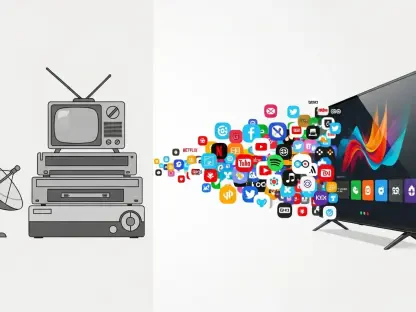What happens when a telecom titan absorbs a regional favorite, promising better service but risking the charm of local choice? Picture rural communities where spotty coverage frustrates daily life, suddenly gaining access to cutting-edge networks—but at the cost of personalized plans tailored to their unique needs. T-Mobile’s acquisition of UScellular, a deal approved by the U.S. Department of Justice, has ignited a firestorm of debate about competition and consumer impact in the wireless industry. This isn’t just about corporate chess moves; it’s about how millions connect, communicate, and navigate their digital lives.
Why This Deal Is a Big Deal for Wireless Users
The significance of this merger lies in its potential to redraw the map of mobile connectivity across the United States. T-Mobile, a heavyweight among the “Big 3” national carriers, brings vast resources and aggressive market strategies to the table. UScellular, by contrast, has been a lifeline for niche demographics like rural “Heartland Families,” offering community-driven service that larger players often overlook. The Department of Justice’s decision not to block this acquisition signals a pivotal moment, raising questions about whether bigger always means better for consumers.
This transaction isn’t merely a footnote in corporate ledgers; it’s a test case for balancing technological advancement with market diversity. With the wireless sector already dominated by a handful of giants, the disappearance of a regional player could shrink options for those who rely on localized support. Yet, the promise of enhanced coverage in underserved areas offers a compelling counterargument. The stakes are high, and the outcome could set a precedent for future consolidations in this critical industry.
The Players Behind the Merger and What’s at Stake
T-Mobile stands as a powerhouse, known for expansive networks and competitive pricing that have reshaped consumer expectations. Its rival, UScellular, operates on a smaller scale, focusing on specific regions with a personal touch—think tailored plans for “Farmtown Frugals” who value transparency over flashy perks. This contrast highlights a core tension: national scale versus regional relevance, a dynamic that defines much of the current telecommunications landscape.
Industry consolidation has been a growing trend, driven by the immense costs of staying technologically relevant. Smaller carriers often struggle to fund upgrades like 5G infrastructure, pushing them toward mergers with larger entities. The Department of Justice, in its recent evaluation, opted against halting this deal, citing immediate benefits over long-term risks. However, the loss of an independent competitor like UScellular could mean fewer voices advocating for unique consumer needs in an already concentrated market.
How This Merger Could Change Your Service and Coverage
One immediate concern is the potential erosion of localized service that UScellular customers have come to rely on. Unlike T-Mobile’s broad, standardized offerings, UScellular has built its reputation on understanding the quirks of its regional base, providing customer support and pricing that reflect local realities. If this personal touch vanishes post-merger, subscribers might find themselves navigating a less flexible, one-size-fits-all system.
On the flip side, the merger holds promise for network quality, especially in rural zones where connectivity often lags. UScellular has faced challenges in funding the technology needed to compete, with some studies estimating that regional carriers require billions annually to match national standards. T-Mobile’s commitment to integrate networks could deliver faster data speeds and broader coverage, addressing long-standing frustrations for many users in remote areas.
Another layer of complexity involves spectrum consolidation—a critical resource for wireless competition. The Department of Justice scrutinized how T-Mobile’s increased control over spectrum might tilt the market, potentially limiting entry for new players. While concerns persist, the assessment concluded that UScellular’s declining standalone viability lessened the competitive harm, presenting a trade-off between immediate upgrades and future market balance.
Expert Insights and Real Voices on the Deal
Assistant Attorney General Gail Slater, in a statement from the Department of Justice, emphasized a pragmatic view: “The immediate gains in network performance for consumers outweigh the risks of reduced service variety at this juncture.” This reflects an understanding that scale often fuels innovation in a capital-intensive field like telecommunications. Experts agree, pointing out that smaller carriers face unsustainable financial pressures, making mergers a near-inevitable path for survival.
Consumer sentiment adds depth to the discussion, particularly from rural UScellular subscribers who have voiced exasperation with inconsistent service. Feedback gathered from community forums suggests that while many cherish the carrier’s local focus, the allure of reliable, high-speed connections under T-Mobile’s umbrella is hard to ignore. Industry analysts reinforce this, noting that without intervention, regional providers risk obsolescence in the race for technological parity.
A broader perspective comes from market data, which shows national carriers controlling over 90% of wireless subscriptions. This dominance underscores why each merger draws intense scrutiny—every lost competitor chips away at diversity. Yet, the consensus among observers is that consumer benefits like improved rural access might justify this particular consolidation, provided oversight ensures promises are kept.
What Can Be Done to Protect Consumer Interests
As this merger progresses, consumers hold power to influence outcomes by actively sharing their priorities with T-Mobile. Those in rural areas, where UScellular’s presence has been strongest, can advocate for the preservation of community-specific practices, ensuring that national standardization doesn’t erase valued services. Engagement at this level could shape how the merged entity approaches its expanded customer base.
Policymakers also have a role, with the ability to attach conditions to the deal that safeguard public interest. Mandates for sustained rural investment or clear pricing structures could mitigate risks of reduced competition. Regulatory bodies might consider timelines—perhaps monitoring changes from now through 2027—to evaluate whether T-Mobile upholds commitments to enhanced coverage without hiking costs disproportionately.
Finally, ongoing vigilance from both consumers and regulators is essential. Tracking spectrum allocation and service adjustments in the coming years will reveal whether this merger truly benefits the market or tilts it further toward monopoly. Staying informed and vocal ensures that the wireless industry evolves in a way that prioritizes accessibility and choice, preventing any community from being left behind in the push for bigger, faster networks.
Reflecting on a Transformative Moment
Looking back, the approval of T-Mobile’s acquisition of UScellular marked a defining chapter in the wireless industry’s evolution. It highlighted the delicate dance between fostering innovation through scale and preserving the diversity that smaller players brought to the table. The decision by the Department of Justice to allow the merger reflected a calculated bet on immediate consumer gains over speculative competitive losses.
As the dust settled, the focus shifted to actionable oversight. Stakeholders began emphasizing the importance of holding T-Mobile accountable for its pledges, particularly in rural regions where connectivity improvements were most needed. This merger served as a reminder that while consolidation could drive progress, it demanded rigorous checks to prevent unintended erosion of consumer options.
Ultimately, the path forward rested on collaboration—between customers demanding transparency, regulators enforcing fair play, and industry players adapting to diverse needs. This moment in telecommunications history underscored a broader truth: progress in connectivity should never come at the expense of choice, and sustained effort was required to ensure that balance endured.









